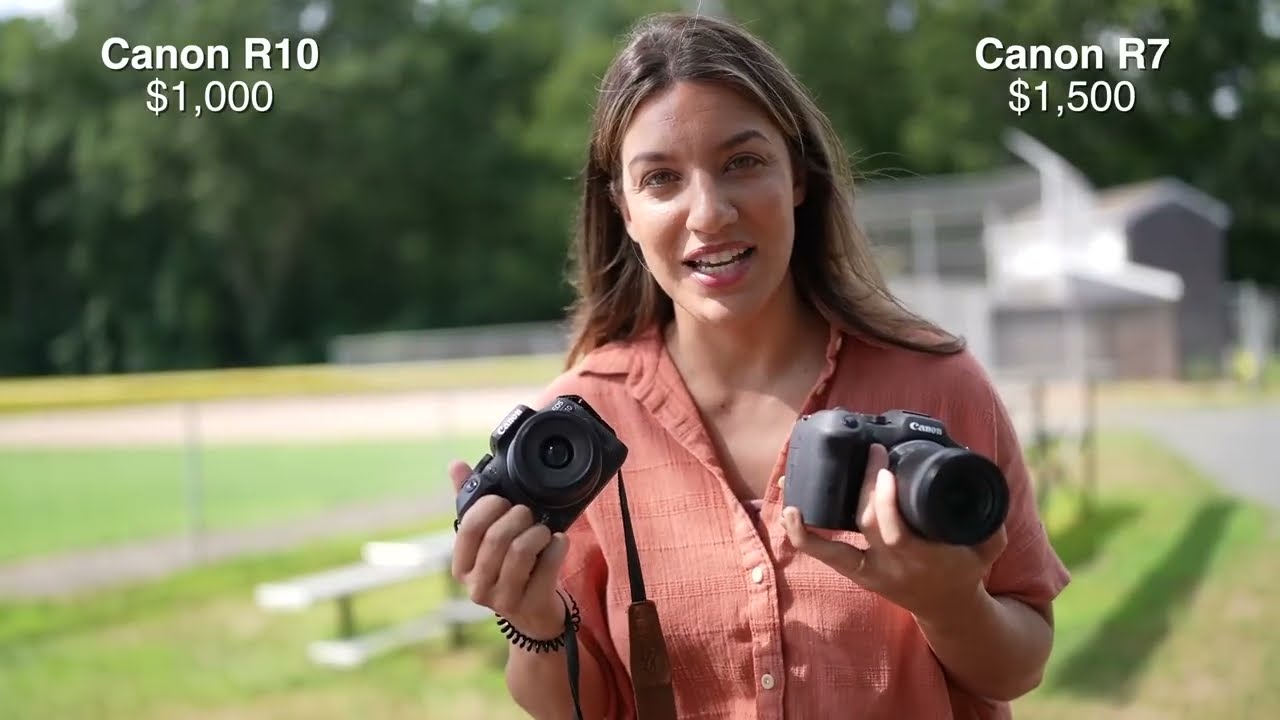

Cameras have come a long way since the days of film. Today, digital cameras reign supreme and among them, Canon is a popular choice among photographers. However, with so many options available in the market, choosing between a Canon DSLR and a Canon mirrorless camera can be a daunting task. In this article, we’ll take an in-depth look at both types of cameras and compare their features, design, performance, and more.
Canon DSLR Cameras: What Are They?
A digital single-lens reflex (DSLR) camera is a type of camera that uses a mirror to reflect light from the lens to an optical viewfinder for composing the image. Canon DSLRs are known for their high-quality images, rugged build quality, and extensive lens selection. Here are some of the advantages of using a Canon DSLR:
- Advantages
- Large selection of lenses and accessories available
- Optical viewfinder for easy framing
- Fast autofocus system
- Excellent battery life
- Great for shooting action and sports photography
However, there are also some downsides to using a Canon DSLR:
- Disadvantages
- Bulky and heavy to carry around
- Loud shutter noise
- Limited video capabilities
- Mirror mechanism can cause vibrations
Some popular Canon DSLR models include the Canon EOS 5D Mark IV, Canon EOS Rebel T7i, and Canon EOS 90D.
Canon Mirrorless Cameras: What Are They?
A mirrorless camera, as the name suggests, doesn’t have a mirror to reflect light up to the viewfinder. Instead, it uses an electronic viewfinder or an LCD screen to display the image. Canon’s mirrorless cameras offer a smaller body design, high-speed autofocus, and faster burst rates. Some advantages of using a Canon mirrorless camera are:
- Advantages
- More compact and lightweight compared to DSLRs
- Silent shutter operation
- High-resolution electronic viewfinder
- Fast autofocus system with eye detection
- Better video capabilities
However, there are some downsides to using a Canon mirrorless camera as well:
- Disadvantages
- Limited lens selection compared to DSLRs
- Battery life may not be as good as DSLRs
- Small body design can be difficult for those with large hands
- Electronic viewfinder can have lag time in fast-action shooting
Some popular Canon mirrorless models include the Canon EOS R6, Canon EOS RP, and Canon EOS M50 Mark II.
Design and Handling
When it comes to design and handling, both Canon DSLRs and mirrorless cameras have their own unique features. Canon DSLRs have a familiar design that’s been around for decades, making them easy to use for photographers who have been using film SLRs before. The camera body is usually larger and heavier, providing a better grip and stability.
On the other hand, Canon mirrorless cameras are designed to be more compact and lightweight, making them easier to carry around. They offer a sleek and modern design, with fewer buttons and dials than DSLRs. This can make for a cleaner look but may also mean that certain settings may take longer to adjust.
Image Quality
Both Canon DSLR and mirrorless cameras offer excellent image quality. The main difference between the two is the type of sensor used. Canon DSLRs typically use an optical low-pass filter (OLPF) to reduce moiré and aliasing, while Canon mirrorless cameras use a sensor without an OLPF for sharper images.
However, sensor technology has advanced significantly in recent years, and the difference in image quality between the two types of cameras is becoming less noticeable. Both DSLRs and mirrorless cameras offer high-resolution sensors capable of capturing excellent detail and dynamic range.
Autofocus System

Autofocus is an essential feature in modern cameras, particularly when it comes to shooting action and sports photography. Both Canon DSLRs and mirrorless cameras have advanced autofocus systems that make it easy to capture sharp images quickly.
Canon DSLRs use a phase-detection autofocus system, which measures the distance between the camera and the subject using dedicated autofocus points. This makes the autofocus system fast and accurate, but it may struggle with tracking moving subjects.
Canon’s mirrorless cameras use a combination of phase-detection and contrast-detection autofocus systems. This allows for faster and more accurate autofocus performance, especially when it comes to tracking moving subjects.
Video Capabilities
Video has become an increasingly important feature in modern cameras, and both Canon DSLRs and mirrorless cameras offer good video capabilities. However, mirrorless cameras are generally better suited for video due to their silent shutter operation and better autofocus performance.
Canon DSLRs typically have limited video capabilities, with lower resolution and frame rates compared to mirrorless cameras. They also suffer from rolling shutter artifacts, which can cause distortionin fast-moving scenes.
Canon’s mirrorless cameras, on the other hand, offer better video capabilities, with higher resolution and frame rates. They also have a silent shutter operation, which makes them ideal for shooting in quiet environments. Additionally, the autofocus performance of Canon’s mirrorless cameras is excellent, allowing users to track moving subjects with ease.
Lens Selection

One of the biggest advantages of using a Canon DSLR is the extensive selection of lenses available. Canon has been producing DSLR cameras for decades, and as a result, there are hundreds of lenses available for their DSLRs, ranging from wide-angle to telephoto, and everything in between.
While Canon’s mirrorless cameras have a more limited selection of lenses, they are compatible with Canon EF and EF-S lenses via an adapter. This means that Canon mirrorless users can still access the vast selection of Canon lenses available for DSLRs.
Battery Life
Battery life is an important consideration when it comes to choosing a camera. Canon DSLRs typically have longer battery life compared to mirrorless cameras due to their larger body size, which allows them to accommodate a larger battery.
Canon mirrorless cameras have smaller bodies, which means that they have smaller batteries. While this may be a disadvantage in terms of battery life, many modern mirrorless cameras use efficient power management systems to conserve battery life.
Price
Price is always a consideration when it comes to buying a camera, and both Canon DSLRs and mirrorless cameras are available at a range of price points. Generally speaking, entry-level DSLRs are cheaper than entry-level mirrorless cameras, but this isn’t always the case.
When it comes to high-end cameras, prices can vary significantly depending on the features offered. For example, the Canon EOS R5, one of Canon’s flagship mirrorless cameras, is priced higher than the Canon EOS 5D Mark IV, a high-end DSLR.
Conclusion
Choosing between a Canon DSLR and a Canon mirrorless camera ultimately comes down to personal preference and specific needs. If you’re looking for a camera with a wide selection of lenses, excellent battery life, and great for shooting action photography, then a Canon DSLR might be the best choice for you. On the other hand, if you’re looking for a compact camera with advanced autofocus performance and better video capabilities, then a Canon mirrorless camera might be the better option.
Whichever camera you choose, remember that both Canon DSLRs and mirrorless cameras offer excellent image quality and advanced features that can help take your photography to the next level.
